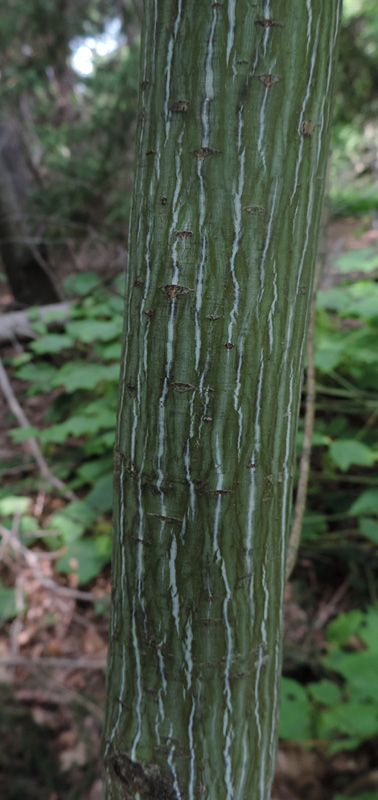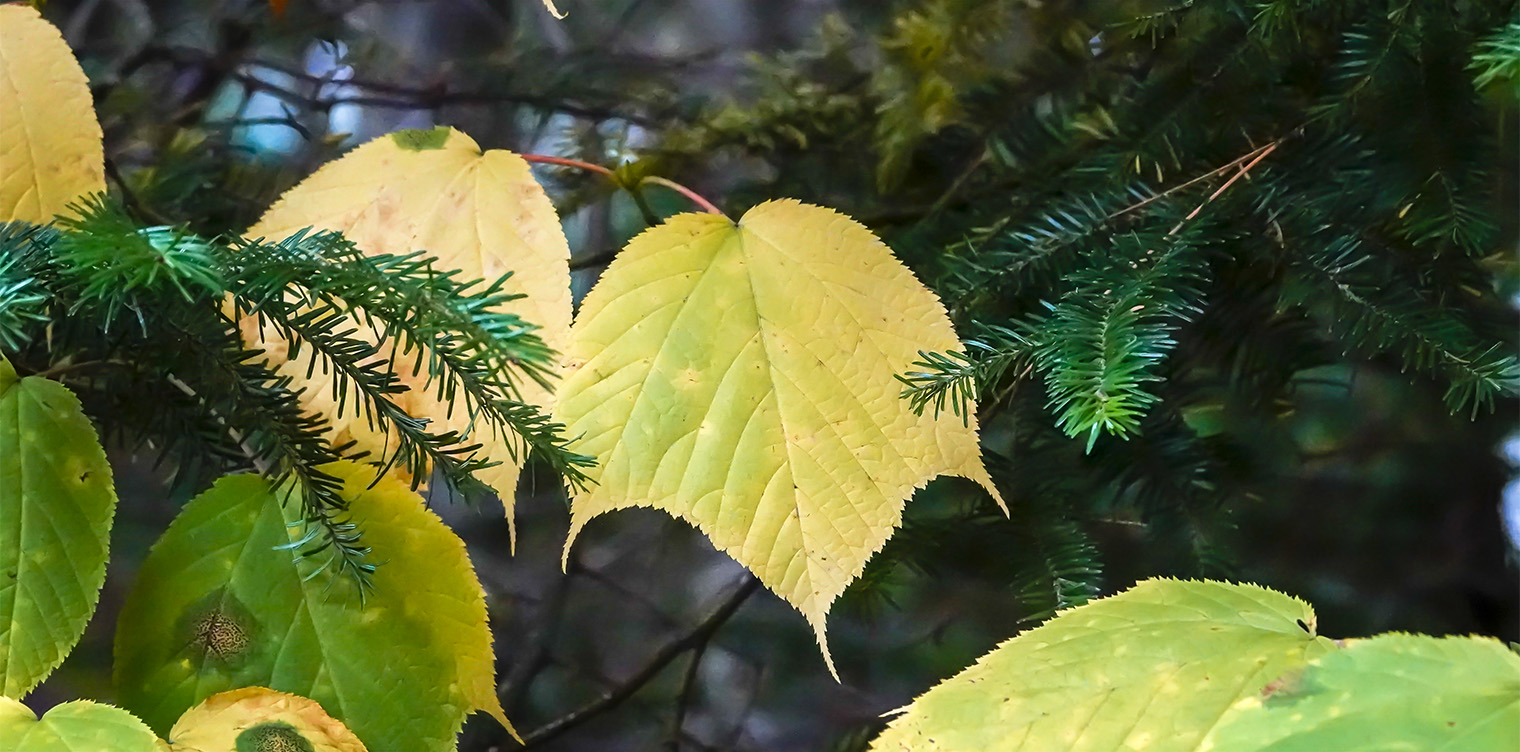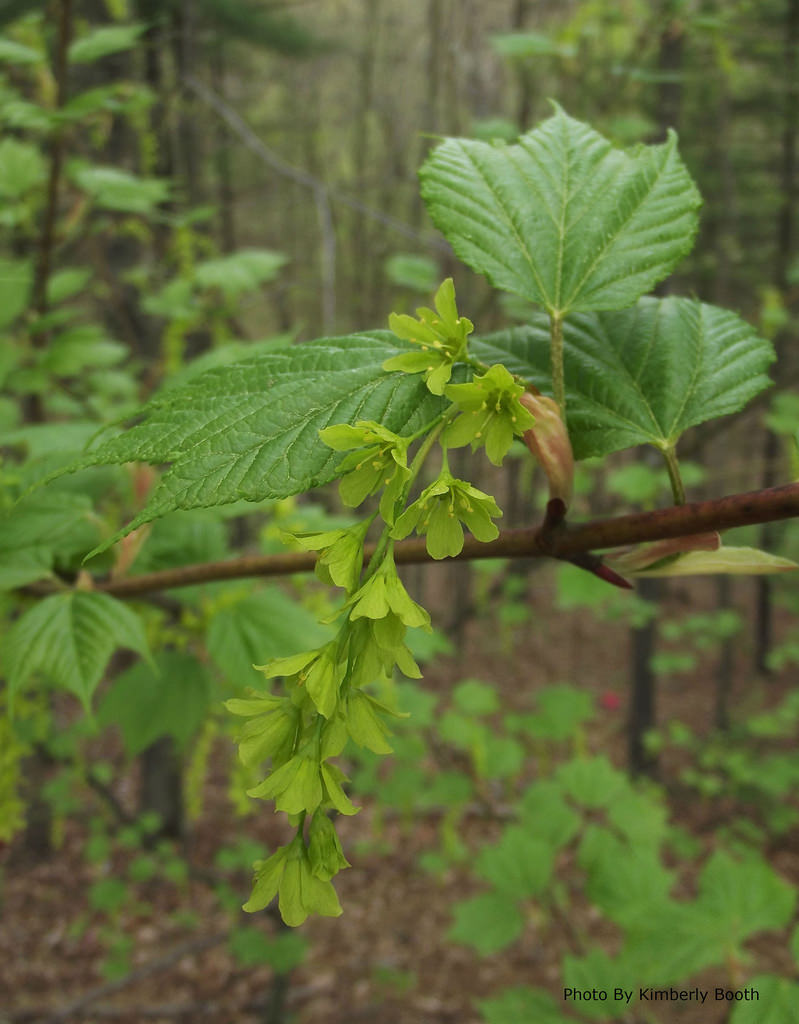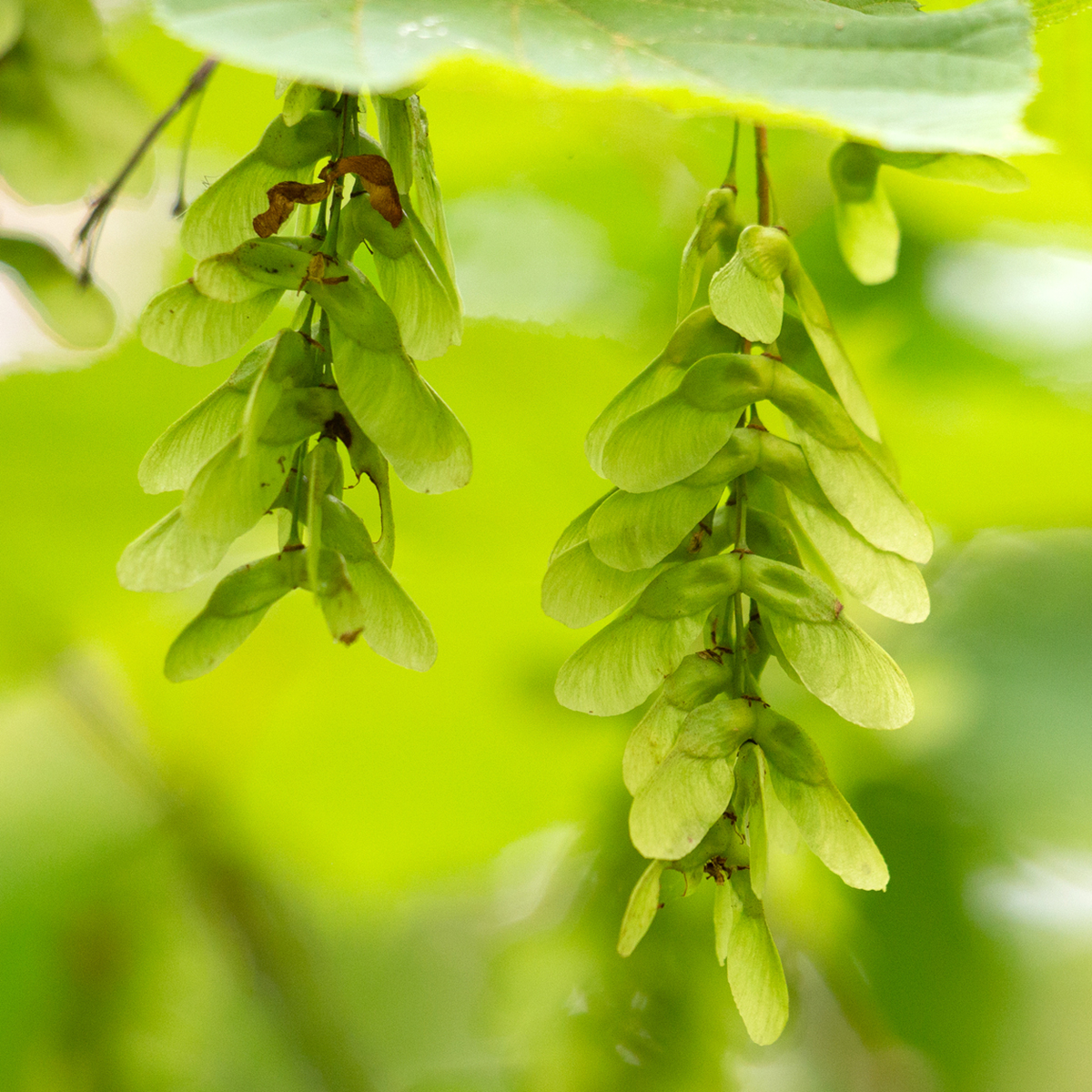Striped Maple
Acer pensylvanicum L.
Description
Striped maple is a member of the soapberry family (Sapindaceae). It is an understory tree and may take on a more shrub-like appearance ¹. It may reach heights of 35 feet 5. The tree is recognized for its smooth bark, which has a greenish-brown hue and thin white lines. As the tree grows older, the bark’s color changes to a reddish-brown with dark lines ¹. Another key identifier is the leaves, they have three lobes and are finely serrated, and grow as long as seven inches ², and in the fall the leaves turn a bright yellow. Fruits are up to 1-inch long samaras 5.

Aspect and fall foliage of striped maple ²

Young bark showing green and white stripes. B. Hubick 8

Leaf of striped maple ¹

Flowers of striped maple. K. Booth 8

Fruits of striped maple 11
Distribution
The striped maple is native to many places all over the northeastern quarter of the united states, including southeastern parts of Canada as well ¹. Due to its small appearance it prefers and does very well in heavily shaded areas and does exceptionally well in cooler summers5, so you won’t expect to find this in hot as well as humid areas on the map 5. It grows in shady areas with moist soil with great drainage, and much like almost all maples it prefers ¹ northern slopes or deep valleys. In Maryland, striped maple can be found scattered throughout the western mountainous regions 8.

Natural distribution of striped maple ³
Wildlife Importance
Not only is it a great nesting place for small birds it is also commonly used as a browse plant by many creatures. The twigs of the plant are typically consumed by mammals like hares, white-tailed deer, porcupines, and moose, while the seeds are targeted by other animals such as chipmunks and red squirrels ¹. Striped maple supports the caterpillars of Imperial Moth 5. In addition to serving as a food source for browsing animals, this tree plays a crucial role in adding vertical diversity and creating multiple layers within the forest. This enables a greater range of animal species to inhabit the ecosystem, thereby enhancing its overall biodiversity and improving its ecological health 4.
Economic Importance
Although the striped maple has few commercial uses, its fine-grained wood has been utilized as an inlay material for cabinets ³. Striped maple has been an important resource for Native American tribes, who have utilized both its wood and bark for a variety of purposes. The bark has been traditionally used for medicinal purposes ³. The inner bark can be brewed into a tea and used to treat various conditions such as colds, coughs, bronchitis, kidney infections, and gonorrhea 10.
Threats
In certain regions of the world, this particular tree is prone to a number of issues, including soil-borne diseases that may prove fatal for the affected species 6. They are prone to gall midges another term for gnats 6, fungal diseases, frost, and other pathogenic diseases as well such as Cristulariella leaf spots, and leaf blight these both cause spots and/or holes that could really be damaging to the leaf as well 6.
Interesting Facts
- Striped maple is also known as the “Goosefoot” Maple due to its leaves’ resemblance to a goosefoot ².
- Its distinctive bark characteristics have earned it the nickname “Snake Bark Maple” ³.
- Other common names include “moosewood” and “whistlewood”5.
- Striped maples produce a fruit called double samaras (a.k.a. Winged seeds) they usually ripen towards the end of the summer 7.
- The largest stripe ever recorded was discovered in the early 1900s, in Kentucky in which it ranged up to 65ft tall and 4.5 ft in diameter 9.
References
- Adirandacks Forever Wild–Trees of the Adirondacks: Striped Maple (Acer pensylvanicum)
- Green Thumbs Garden: Striped Maple Tree
- Wikipedia: Acer pensylvanicum
- Native Plant Trust: Acer pensylvanicum
- North Carolina State Extension: Acer pensylvanicum
- The Connecticut Agricultural Experiment Station: Common diseases of maple
- Wild Seed Project: Striped maple
- Maryland Biodiversity Project: Striped maple
- Dengarden: Everything you need to know about striped maple trees
- Medicinal Plants of the Northeast: Striped maple
- Ontario: Striped maple
Contributed by T. Clark
Towson University Glen Arboretum
